
Newly Emerged Dragonfly (Probably Common Darter - Sympetrum striolatum), originally uploaded by Pipsissiwa.
On a horribly windy day last week I nevertheless ventured stoically into the garden to get some photos. Not much was happening and I was ready to go back in empty camera'd when I noticed something odd on a reed poking out of the pond.
To my great delight it was a dragonfly larval case. After spotting the skin, I looked around and suddenly spotted another one with an new adult resting above it on the plants nearby.
As with the damselflies I described in an earlier post, the dragonfly spends a large part of its life as an aquatic nymph.
When ready to emerge the larva climbs up a plant stem and then the skin cracks open, allowing the enclosed winged adult to crawl out. Over the next few hours the new adult dries out, hardens up and generally takes on the familiar form.
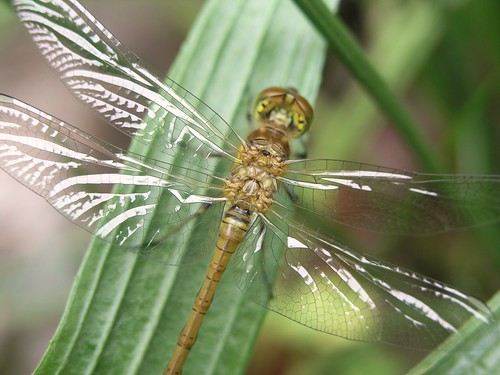
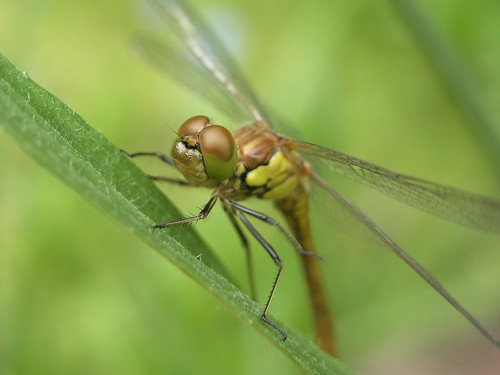
Still drying and stiffening its wings when I found it, it couldn't fly too well, although it did land on my hand at one point before it finally flew away :)
Whilst it is still very pale and only the black markings are really visible, I am sure it is a Common Darter (Sympetrum striolatum):
The size, black markings and the small fact that I watched these Common Darters mating & laying their eggs in the pond last August all strongly suggest the ID.
The reason why dragonflies have such a bulky thorax is almost entirely down to the huge and powerful flight muscles that power the wings. Although held along the abdomen when the insect first emerges, once dry and expanded, the wings are held permanently out to the sides; dragonflies are unable to fold their wings, even at rest. This is a key identification point between Damselflies (who hold their wings along their abdomen) and Dragonflies (who hold them out to the sides). These huge muscles allow Dragonflies to be incredibly fast and maneuverable in flight, more so than any other insect.
The huge compound eyes are quite incredible up close.
The wings themselves are made of a spectacular network of veins.
I haven't been lucky enough to see another emerging, but the reeds have loads of new skins on them every day, so I know they are there. :)
With luck they will be back looking for mates and lay their eggs in the pond for the next generation.


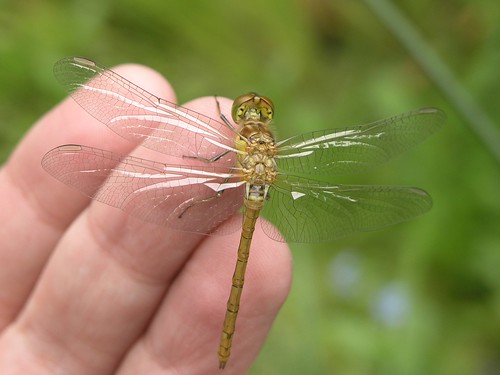




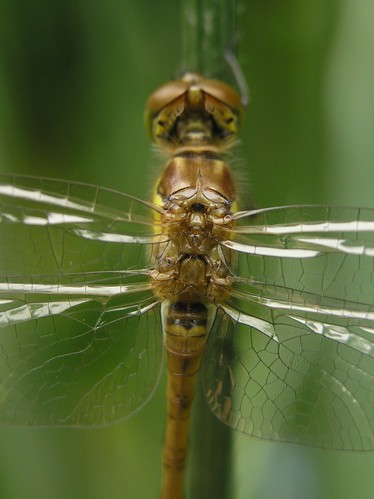

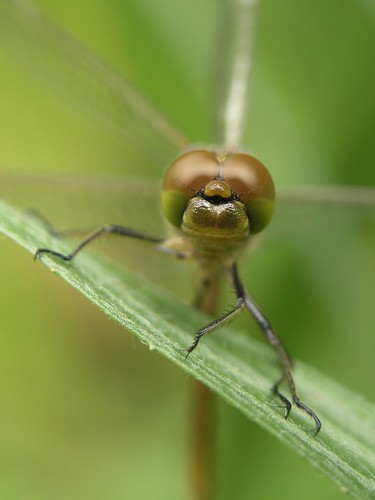
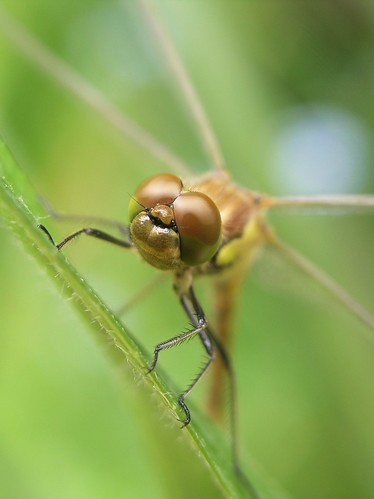

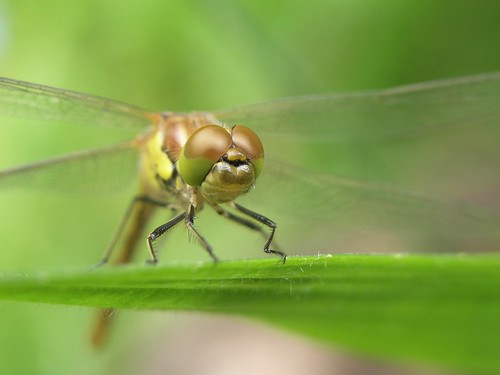
I love coming over to your place..Dragons...How magical..!!!!!
ReplyDelete